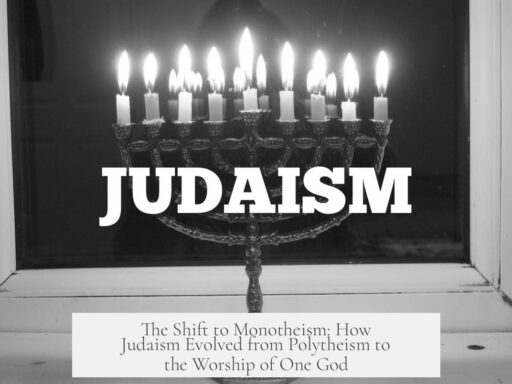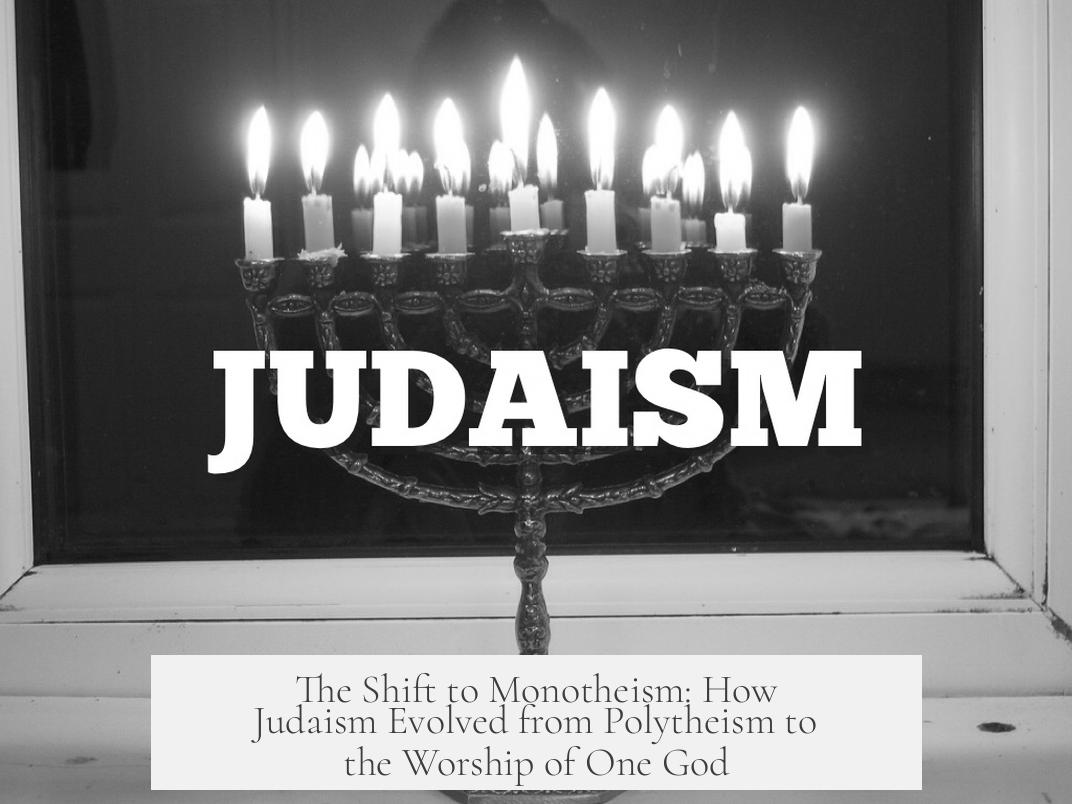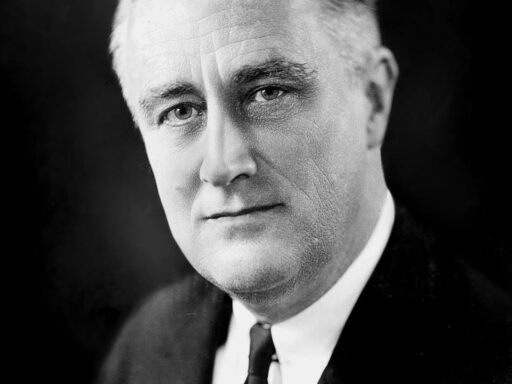Judaism becomes distinctly monotheistic mainly during the post-Exilic period, particularly around the 5th century BCE, when explicit declarations like those in Deutero-Isaiah affirm that YHWH is the sole God, contrasting earlier Israelite beliefs that acknowledged other deities.
Early Israelite religion does not start as strictly monotheistic. Archaeological and textual evidence shows that ancient Israelites recognized multiple gods. The Hebrew Bible itself uses terms such as El and Elohim, which originally referred to a broader divine council or multiple gods in the Near Eastern context. ‘El’ is a generic term for “god” and derives from a Levantine deity worshiped as king of the gods.
The Psalm 82 reference, “Elohim judges among the elohim,” illustrates this concept of divine plurality. It implies a council of gods, with ‘Elohim’ able to judge among other divine beings. This reflects a worldview in which YHWH was one among other gods rather than the sole god initially.
YHWH, the personal name revealed to Israel, is not attested outside Israelite contexts until inscriptions like the Mesha Stele (circa 9th century BCE), which mention YHWH in relation to Israel. Although this suggests early worship of YHWH as a national deity, it does not mean exclusive worship yet.
YHWH shares attributes with other Near Eastern deities, notably Ba’al, a prominent storm god from Ugaritic texts. Both YHWH and Ba’al are connected with power over storms and the defeat of sea monsters—YHWH kills Leviathan, Ba’al defeats Lotan. The overlap suggests that early Israelite religion syncretized elements from neighboring beliefs.
Another key aspect is Asherah, regarded as the consort of El. Artifacts such as figurines suggest that ancient Israelites possibly worshiped Asherah alongside YHWH or El. However, these practices gradually declined, especially after the Babylonian Exile, as Israel tightened religious boundaries and condemned idolatry.
The Babylonian Exile (6th century BCE) marks a turning point. The trauma of exile and destruction led Israelite leaders to emphasize exclusive loyalty to YHWH as a wrathful and avenging God who punishes unfaithfulness. This period intensifies monotheistic ideology, reflected in texts like Deutero-Isaiah, which proclaim “there is no other god besides YHWH.”
The term “Judaism” itself applies properly only after the exile, as distinct from earlier “Israelite” or “Hebrew” religion. Thus, Judaism as a fully developed monotheistic faith is largely a post-Exilic phenomenon, shaped by social-political upheaval and religious reform.
Some scholars suggest Zoroastrianism, the ancient Iranian faith, influenced this shift. Zoroastrianism emphasizes a supreme god, Ahura Mazda, and moral dualism. It shares ritual features with Judaism, like ritual purity and opposition to idolatry. The praise of Persian king Cyrus in Deutero-Isaiah echoes royal worship seen in Zoroastrian texts.
Despite similarities, Zoroastrianism does not fully explain Israel’s strict monotheism because it incorporates multiple spirits and a cosmic struggle with evil, rather than exclusive worship of one deity. The precise evolution of strict monotheism in Judaism remains partly unclear.
| Phase | Key Characteristics | Approximate Date |
|---|---|---|
| Pre-exilic Israelite Religion | Recognition of multiple gods including El, Asherah; YHWH worship begins | Before 6th century BCE |
| Babylonian Exile | Increased focus on YHWH as sole God; rejection of idols and other gods | 6th century BCE |
| Post-Exilic Judaism (Deutero-Isaiah) | Explicit monotheism; YHWH as creator and only God; theology consolidates | 5th century BCE |
| Zoroastrian Influence | Possible impact on purity laws, monotheistic ideas, royal ideology | 6th–5th century BCE |
- Early Israelite religion includes acknowledgment of other gods alongside YHWH.
- ‘El’ and ‘Elohim’ originally refer to multiple divine beings or a council of gods.
- Asherah worship existed but was later abandoned.
- Babylonian Exile causes a religious shift toward strict monotheism.
- Deutero-Isaiah texts (5th century BCE) represent first explicit monotheistic statements.
- Zoroastrianism may have influenced monotheistic and ritual ideas but doesn’t fully explain Judaism’s monotheism.
- ‘Judaism’ as a monotheistic religion emerges after the exile, marking a distinct phase from earlier Israelite religion.
How and When Did Judaism Become Monotheistic When Early Jewish Groups Recognized Other Gods?
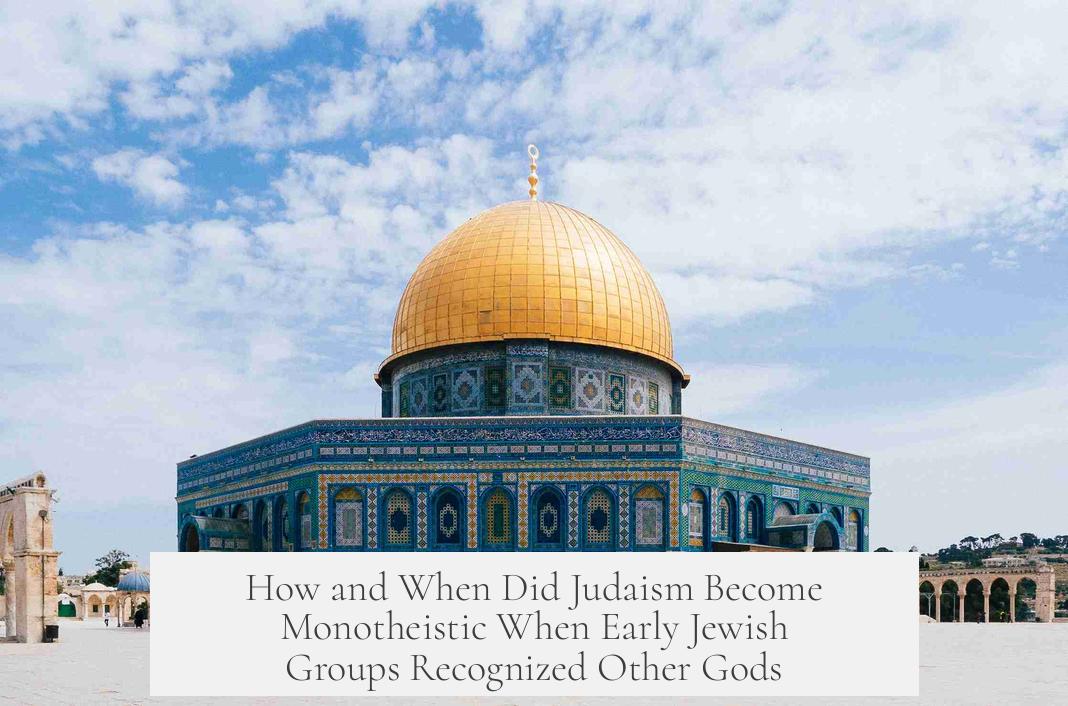
Let’s get straight to it: Judaism officially becomes monotheistic in the post-Exilic period, roughly the 5th century BCE, especially in texts like Deutero-Isaiah that declare there is only one God — YHWH. Before this, early Jewish groups acknowledged other gods but increasingly emphasized the supremacy of YHWH.
Now, that’s the headline. But it’s a fascinating journey from a varied religious landscape where Israelites coexisted with multiple gods to a strict monotheism that defines Judaism today. Let’s unravel how this transformation happened and why.
Early Israelite Religion: A Polytheistic Playground?
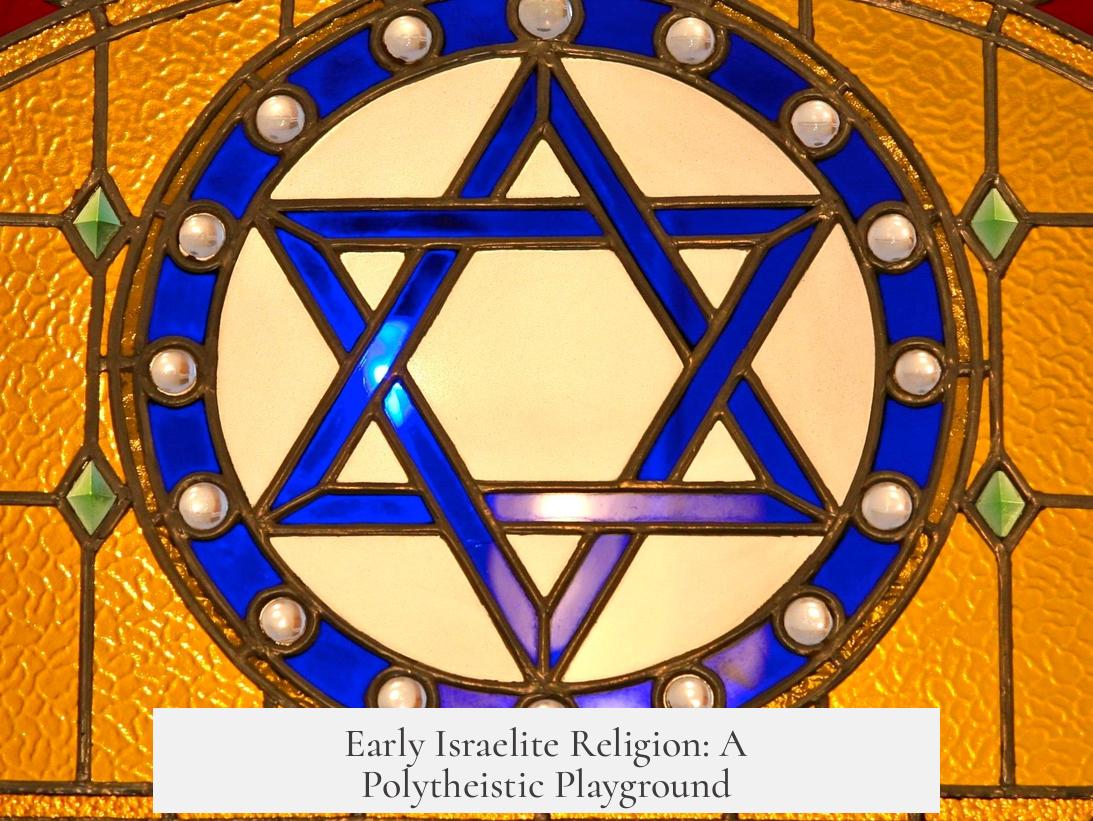
Reading the early Hebrew texts reveals something intriguing: the use of multiple terms for deities. There’s YHWH (sometimes spelled Yahweh), which appears as the national God of Israel, but also El and Elohim. El or Elohim—these terms originally described generic gods or divine beings in the ancient Near East.
For example, “El” was not just a name but a title for a high god who ruled a pantheon, much like Cronus or Zeus in Greek mythology. Psalm 82 drives this point home with a remarkable pun, “Elohim judges among the elohim,” implying a council of gods, not one single divine entity. So, early Jewish groups lived in a religious environment where other gods were recognized or at least acknowledged.
The Influence of Asherah and Other Deities
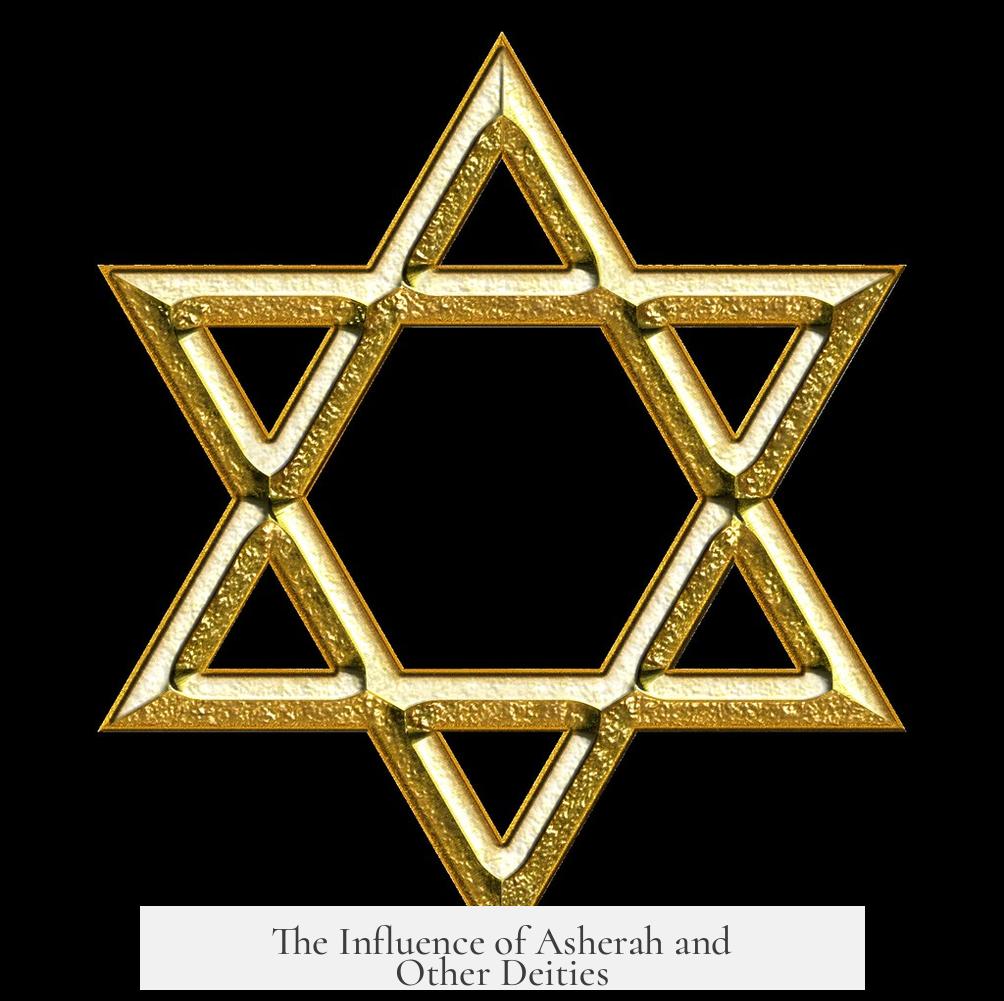
Even El had divine company. One example is Asherah, a goddess associated as a consort to El. Archaeological finds of Asherah figurines in pre-exilic sites indicate that worship of female deities alongside YHWH was a thing. However, these figurines pretty much disappear after the exile, suggesting a crackdown on what became seen as idolatry.
Why the change? Well, it appears that the Babylonian Exile — a traumatic event where the Kingdom of Judah was conquered, and many Israelites were taken prisoner — catalyzed a push towards religious reform. In a moment of crisis, worshipping one all-powerful, wrathful God who demanded exclusive loyalty had a strong appeal. The exile redefined the relationship with YHWH as not just national deity, but the one and only God.
Babylonian Exile: The Turning Point

The exile is a pivotal moment. Ancient Israel suffers enormous humiliation. Their national identity crumbles. In response, the theology evolves sharply.
Texts from this period, especially Deutero-Isaiah, repeatedly emphasize that YHWH is the creator of all — the one true God, not one god among many. These passages describe YHWH with cosmic power, creator of the heavens and the earth, and the sole deity worthy of worship. This is explicit monotheism.
It coincides with the distinction between “Israelites” and “Jews.” The term “Judaism” emerges here, defining a religion that revolves around loyalty to a single God who demands exclusive worship.
The Possible Influence of Zoroastrianism

Beyond the trauma of exile, external religious influences also seep in. One strong candidate is Zoroastrianism, an ancient Iranian religion centered around Ahura Mazda, a supreme creator god. While Zoroastrianism itself is not simple monotheism, it introduced a sharp dualism and emphasized purity, ritual, and the battle between good and evil.
The Jewish people in Babylon might have found this conceptually appealing. Shares in ritual practices and an exclusive religious identity seem more than coincidental. Deutero-Isaiah even praises Cyrus the Great, a Persian king, as an instrument of YHWH, highlighting intertwining cultural influences.
Still, historians caution: Zoroastrianism does not fully explain Judaism’s strict monotheism. Zoroastrian theology is complex, with multiple divine beings and spirits, so the sharp “one God only” stance in Judaism is somewhat unique.
The Larger Picture: Moving From Henotheism to Monotheism
So what’s the journey, exactly? Scholars often describe the early Israelite religion as henotheistic—acknowledging multiple gods but worshipping one as supreme. YHWH was seen as the national god whose power trumped others. Over time, especially after exile, this henotheism hardened into exclusive monotheism.
It’s like traveling from a crowded religious party where YHWH was the big boss, to a deserted room with only YHWH left illuminated. Deutero-Isaiah’s celebration of YHWH as the only god marks this pivotal theological shift.
Why Does This Matter Today?
Understanding this shift helps us see Judaism not as a static belief system, but a living tradition shaped by history, politics, crisis, and cultural exchange. Early Jewish groups recognizing other gods doesn’t betray inconsistency but shows a faith evolving in response to challenges and new understandings.
Have you ever wondered why modern Judaism is so steadfast about monotheism? It’s because it’s the product of centuries, with roots tangled in the ancient world’s stormy religious seas. Discovering these roots makes tradition richer, even if it complicates simple narratives.
Summary Table: Key Milestones
| Period | Religious Characteristic | Key Developments |
|---|---|---|
| Pre-Exilic (Before 6th century BCE) | Henotheistic/Polytheistic tendencies | Use of El/Elohim; worship of Asherah; YHWH as tribal god |
| Babylonian Exile (6th century BCE) | Theological crisis; reform begins | Trauma of exile; rejection of idols; increased emphasis on YHWH’s supremacy |
| Post-Exilic (5th century BCE onward) | Explicit Monotheism | Deutero-Isaiah highlights one God only; emergence of Judaism; possible Zoroastrian influence |
Final Thoughts: The One God Emerges from Many
In short, the journey from polytheism to monotheism in Judaism is not a sudden transformation but a gradual sharpening of focus. Early Jewish groups recognized multiple gods, yet YHWH stood out. Over centuries, influenced by history and other cultures, Judaism crystallizes around the idea that there is only one God.
Next time you bump into a discussion about ancient religions or the origins of monotheism, you’ll know that Judaism’s one-God belief emerged as a vibrant, often gritty response to real-world challenges. And yes, the gods of old? They quietly faded out as YHWH took center stage.
Have you noticed any other religions with a similarly winding road to monotheism? Or wondered how cultural contact shapes beliefs? Share your thoughts!
When did explicit monotheism first appear in Jewish texts?
Explicit monotheism first appears in Deutero-Isaiah, written in the 5th century BC after the Babylonian Exile. It emphasizes that there is only one God, YHWH, strongly marking a monotheistic belief.
Why did early Israelites recognize other gods before Judaism became monotheistic?
Early Israelites used names like El and Elohim, which derive from broader Near Eastern deities. They often acknowledged other gods, as seen in texts like Psalm 82 that mention divine beings beyond YHWH.
How did the Babylonian Exile influence the rise of monotheism in Judaism?
The exile was a time of hardship that led to rejecting idols and other gods as impious. People focused on YHWH as a wrathful avenger, strengthening exclusive worship and monotheistic ideas.
Did earlier Jewish groups worship a divine consort along with YHWH?
Yes, figures like Asherah, El’s consort, were acknowledged at times. Archaeological finds of Asherah figurines suggest she was part of worship before being rejected as idolatry after the exile.
What role did Zoroastrianism play in Judaism’s monotheistic development?
Zoroastrianism likely influenced some ideas like a supreme creator and ritual purity during the exile. However, strict monotheism and denial of other gods in Judaism cannot be fully explained by this influence alone.
